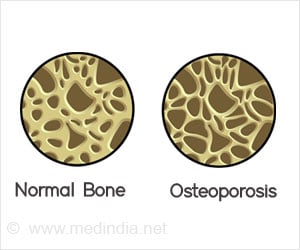Loyola University Health System warns public that basketball is the only sport that causes maximum injuries, since in 2005 US faced nearly 5,12,000 emergency cases related to basketball.
Loyola University Health System warns public that basketball is the only sport that causes maximum injuries, since in 2005 US faced nearly 5,12,000 emergency cases related to basketball.
‘So before people run to the basketball court, they need to take steps to reduce their injury risk,’ said Dr. Pietro Tonino, director, division of sports medicine, Loyola University Health System, Maywood, Ill.‘Bicycles ranked second highest with 485,000 injuries, followed by football with 418,000 injuries,’ said Tonino, assistant professor of orthopaedic surgery, department of orthopaedic surgery and rehabilitation, Loyola University Chicago Stritch School of Medicine, Maywood, Ill. ‘Soccer came in fourth at 174,000 injuries.
‘Athletes, youngsters and weekend warriors alike can wind up in hospital emergency rooms for injuries related to these sports,’ said Tonino, who analyzed new data from the U.S. Consumer Product Safety Commission (CPSC) and compiled a list of the sports with the greatest number of injuries treated at hospital emergency rooms:
Recreational Activity Number of Injuries
Basketball 512,213
Bicycles 485,669
Advertisement
Soccer 174,686
Advertisement
Skateboards 112,544
Trampolines 108,029
Softball 106,884
Swimming/Diving 82,354
Horseback 73,576
Weightlifting 65,716
Volleyball 52,091
Golf 47,360
Roller-skating 35,003
Wrestling 33,734
Gymnastics 27,821
In-line skating 26,935
Tennis 19,487
Track & field 17,306
‘The NBA finals and the World Cup games may inspire people to try a new sport,’ said Tonino. ‘But before they do, people need proper training and conditioning to reduce their injury risk.’ Many injuries can be prevented, according to Tonino, by wearing protective gear, knowing and playing by the rules of the game and being physically fit.
One of the most common knee injuries in sports is a non-contact anterior cruciate ligament (ACL) injury. The ACL, a rope-like bundle of fibrous tissue in the center of the knee, connects the front of the lower leg (shinbone) with the back of the upper leg (thighbone) and helps a person bend their knee, jump and squat. Seventy percent of ACL injuries are non-contact; the other 30 percent result from collison with a person or an object.
‘The ACL can be torn or sprained in sports where the athlete twists, jumps, lands, pivots or suddenly stops,’ said Tonino. ‘Such sports include basketball, soccer, football, volleyball, running and skiing. Females are two- to eight times more likely than males to sustain an ACL injury.
‘In contrast to males, females tend to land from a jump with their knees locked, which puts added pressure on the knee,’ said Tonino. ‘The result can be a sprain or tear of the ACL.’
Slightly bending the knees and hips when landing will reduce injury risk. ‘When playing basketball and volleyball, position the buttocks as if one was about to sit down in a chair, rather than standing upright,’ he said. ‘Players also should land on their forefoot, not their heel.’
Uneven surfaces, such as sand, raise the risk of ACL injury. ‘Soccer is very unpredictable because people are sliding into each other,’ said Tonino. ‘Players rarely stand still. Female athletes should strengthen their hamstrings, the muscles located in the back of the thigh.’
He said that the proper position to shoot a basketball is:
· Feet shoulder-width apart
· Knees slightly bent
· Buttocks positioned as if one was about to sit down in a chair
· Chest up
· Eyes up
· Athletes should not lean over or look at the floor.
The proper position to pass a volleyball is:
· Feet positioned a little wider than shoulder-width apart
· One foot slightly in front of the other
· Hips and knees bent (do not stand upright)
· Arms below shoulder-height
· Stand on forefeet, not heels
An ACL injury can be surgically repaired, but recovery and rehabilitation may take an athlete out of the game for months. Non-surgical treatment is available for mild injuries. ‘Preventing ACL sprains and ruptures is worth the time required for training and exercise,’ said Tonino.
Source: Newswise





